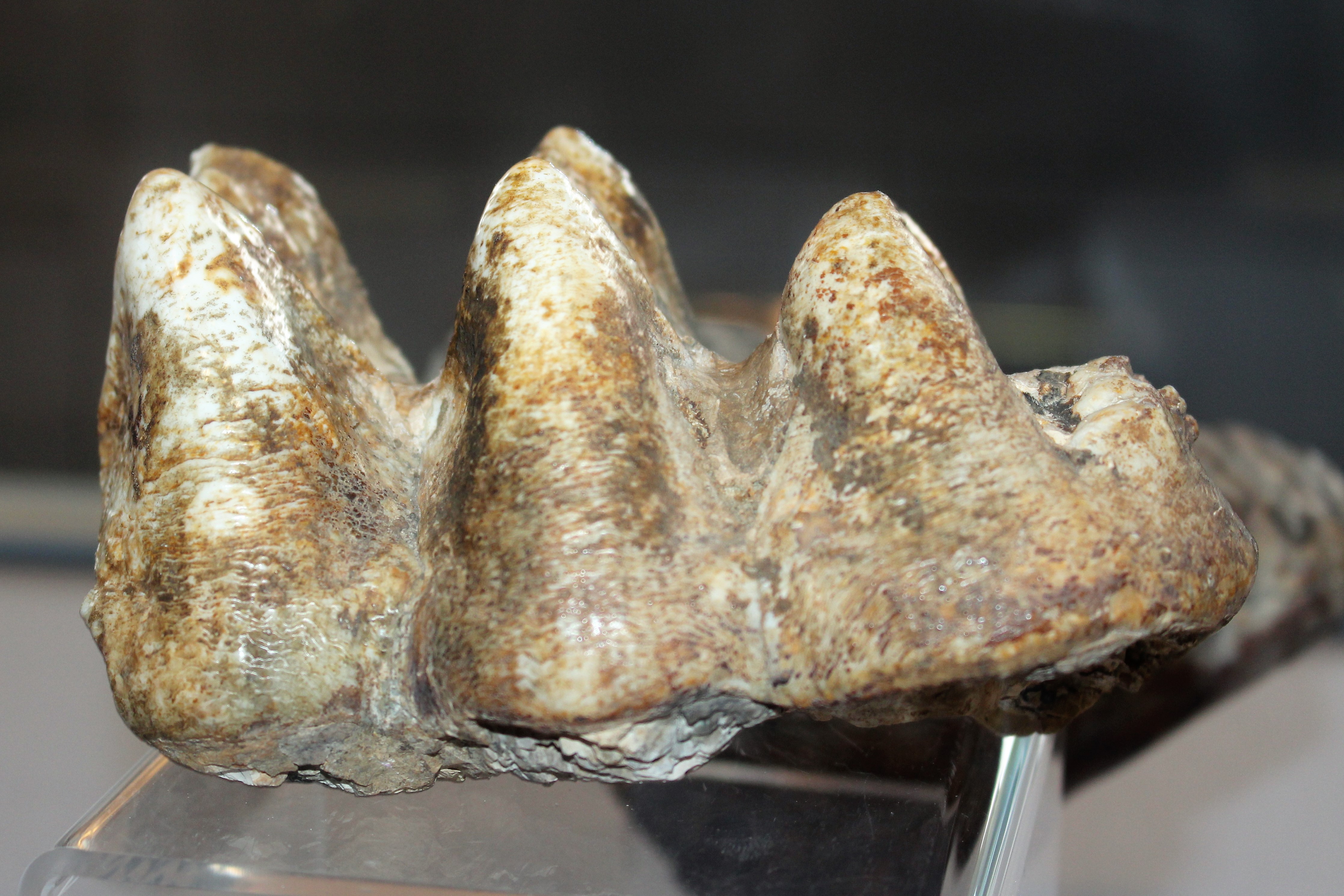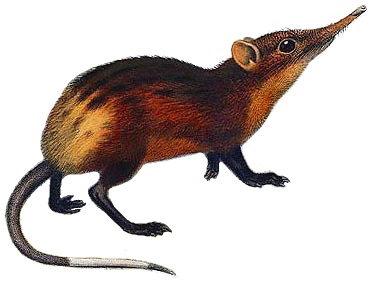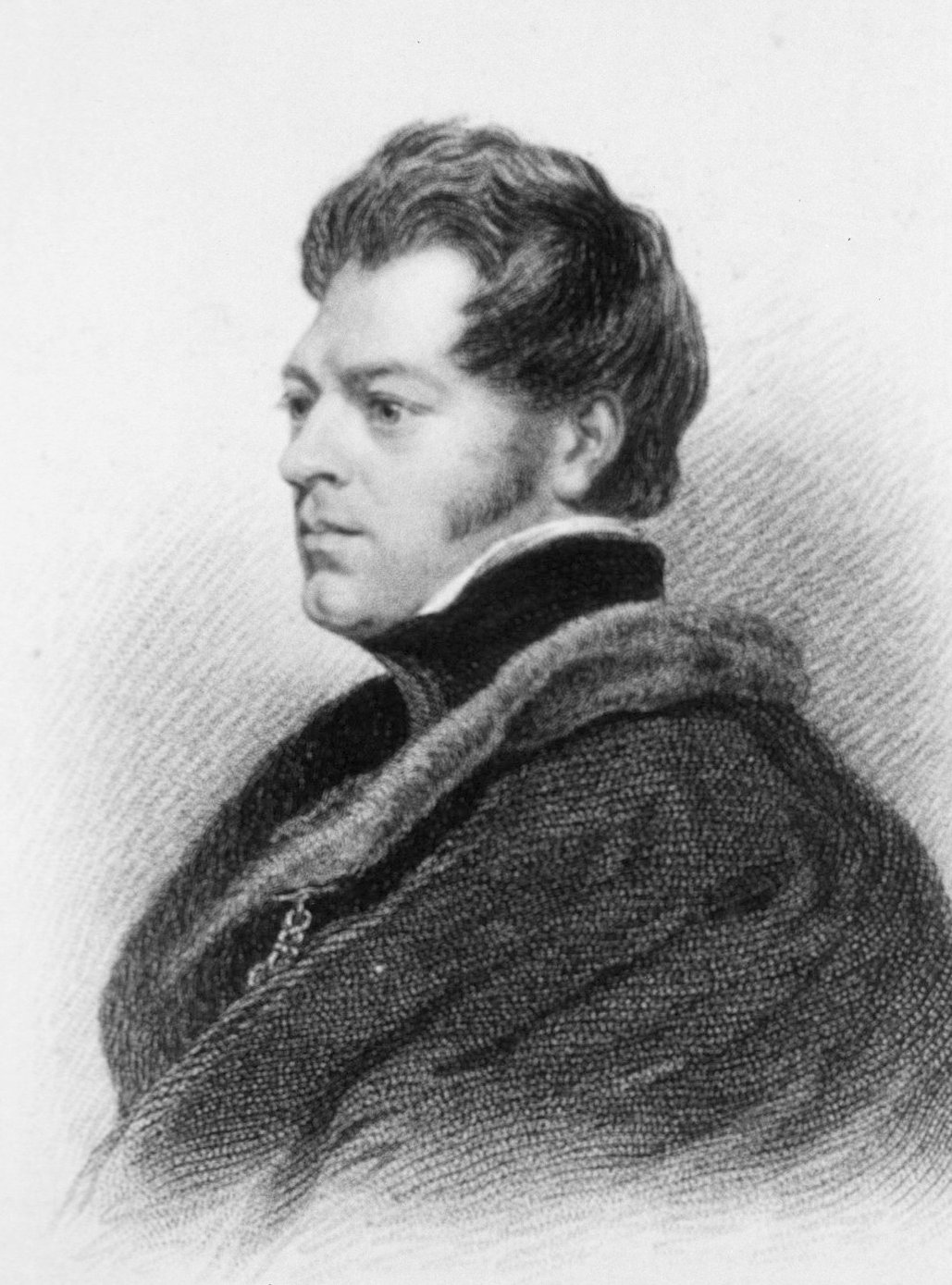|
Mastodons
A mastodon, from Ancient Greek μαστός (''mastós''), meaning "breast", and ὀδούς (''odoús'') "tooth", is a member of the genus ''Mammut'' (German for 'mammoth'), which was endemic to North America and lived from the late Miocene to the early Holocene. Mastodons belong to the order Proboscidea, the same order as elephants and mammoths (which belong to the family Elephantidae). ''Mammut'' is the type genus of the extinct family Mammutidae, which diverged from the ancestors of modern elephants at least 27–25 million years ago, during the Oligocene. Like other members of Mammutidae, the molar teeth of mastodons have zygodont morphology (where parallel pairs of cusps are merged into sharp ridges), which strongly differ from those of elephantids. In comparison to its likely ancestor '' Zygolophodon'', ''Mammut'' is characterized by particularly long and upward curving upper tusks, reduced or absent tusks on the lower jaw, as well as the shortening of the mandibu ... [...More Info...] [...Related Items...] OR: [Wikipedia] [Google] [Baidu] |
Mammoth
A mammoth is any species of the extinct elephantid genus ''Mammuthus.'' They lived from the late Miocene epoch (from around 6.2 million years ago) into the Holocene until about 4,000 years ago, with mammoth species at various times inhabiting Africa, Asia, Europe, and North America. Mammoths are distinguished from living elephants by their (typically large) spirally twisted tusks and in some later species, the development of numerous adaptions to living in cold environments, including a thick layer of fur. Mammoths and Asian elephants are more closely related to each other than they are to African elephants. The oldest mammoth representative, '' Mammuthus subplanifrons'', appeared around 6 million years ago during the late Miocene in what is now southern and Eastern Africa.'''' Later in the Pliocene, by about three million years ago, mammoths dispersed into Eurasia, eventually covering most of Eurasia before migrating into North America around 1.5–1.3 million year ... [...More Info...] [...Related Items...] OR: [Wikipedia] [Google] [Baidu] |
"Mammut" Borsoni
''"Mammut" borsoni'' (sometimes called Borson's mastodon) is an extinct species of mammutid proboscidean known from the Late Miocene to Early Pleistocene of Eurasia, spanning from western Europe to China. It is the last known mammutid in Eurasia, and amongst the largest of all proboscideans and largest known land mammals. Taxonomy ''"Mammut" borsoni'' was first described by American naturalist Isaac Hays in 1834 as ''Mastodon borsoni'', for a tooth discovered near Villanova d'Asti in Piedmont, Italy. It was named after professor , who had originally attributed the tooth to the species ''Mastodon giganteum.'' Since its description it has been attributed to both the genera '' Zygolophodon'' and ''Mammut'' (the latter of which contains the American mastodons)''.'' The attribution of ''"M". borsoni'' to ''Mammut'' has been considered questionable, as the type species for ''Mammut'' is known from North America, and there is no evidence there was a migration of ''Mammut'' from Eu ... [...More Info...] [...Related Items...] OR: [Wikipedia] [Google] [Baidu] |
Elephant
Elephants are the largest living land animals. Three living species are currently recognised: the African bush elephant ('' Loxodonta africana''), the African forest elephant (''L. cyclotis''), and the Asian elephant ('' Elephas maximus''). They are the only surviving members of the family Elephantidae and the order Proboscidea; extinct relatives include mammoths and mastodons. Distinctive features of elephants include a long proboscis called a trunk, tusks, large ear flaps, pillar-like legs, and tough but sensitive grey skin. The trunk is prehensile, bringing food and water to the mouth and grasping objects. Tusks, which are derived from the incisor teeth, serve both as weapons and as tools for moving objects and digging. The large ear flaps assist in maintaining a constant body temperature as well as in communication. African elephants have larger ears and concave backs, whereas Asian elephants have smaller ears and convex or level backs. Elephants are scatter ... [...More Info...] [...Related Items...] OR: [Wikipedia] [Google] [Baidu] |
Proboscidea
Proboscidea (; , ) is a taxonomic order of afrotherian mammals containing one living family (Elephantidae) and several extinct families. First described by J. Illiger in 1811, it encompasses the elephants and their close relatives. Three living species of elephant are currently recognised: the African bush elephant, the African forest elephant, and the Asian elephant. Extinct members of Proboscidea include the deinotheres, mastodons, gomphotheres and stegodonts. The family Elephantidae also contains several extinct groups, including mammoths and '' Palaeoloxodon''. Proboscideans include some of the largest known land mammals, with the elephant '' Palaeoloxodon namadicus'' and mastodon ''"Mammut" borsoni'' suggested to have body masses surpassing , rivalling or exceeding paraceratheres (the otherwise largest known land mammals) in size. The largest extant proboscidean is the African bush elephant, with a world record of size of at the shoulder and . In addition to thei ... [...More Info...] [...Related Items...] OR: [Wikipedia] [Google] [Baidu] |
Georges Cuvier
Jean Léopold Nicolas Frédéric, baron Cuvier (23 August 1769 – 13 May 1832), known as Georges Cuvier (; ), was a French natural history, naturalist and zoology, zoologist, sometimes referred to as the "founding father of paleontology". Cuvier was a major figure in natural sciences research in the early 19th century and was instrumental in establishing the fields of comparative anatomy and paleontology through his work in comparing living animals with fossils. Cuvier's work is considered the foundation of vertebrate paleontology, and he expanded Linnaean taxonomy by grouping classes into phylum, phyla and incorporating both fossils and living species into the classification. Cuvier is also known for establishing extinction as a fact—at the time, extinction was considered by many of Cuvier's contemporaries to be merely controversial speculation. In his ''Essay on the Theory of the Earth'' (1813) Cuvier proposed that now-extinct species had been wiped out by periodic catastr ... [...More Info...] [...Related Items...] OR: [Wikipedia] [Google] [Baidu] |
Isaac Hays
Isaac Hays (July 5, 1796 – April 12, 1879) was an American ophthalmologist, medical ethicist, and naturalist. A founding member of the American Medical Association, and the first president of the Philadelphia Ophthalmological Society, Hays published the first study of non-congential colorblindness and the first case of astigmatism in America. He was editor or co-editor of ''The American Journal of the Medical Sciences'' for over 50 years. Early life and education Isaac Hays was born on July 5, 1796, the second child and eldest son of Samuel and Richea (Gratz) Hays, and a nephew of educator and philanthropist Rebecca Gratz. Hays's wealthy Philadelphia family was involved in the East India trade. After earning his bachelor's degree from the University of Pennsylvania in 1816, Hays briefly joined the family business, then opted to enter the Medical School of the University of Pennsylvania. Nathaniel Chapman mentored Hays during his training, beginning a decades-long friendsh ... [...More Info...] [...Related Items...] OR: [Wikipedia] [Google] [Baidu] |
John Richardson (naturalist)
Sir John Richardson Royal Society of London, FRS FRSE (5 November 1787 – 5 June 1865) was a Scotland, Scottish naval surgeon, natural history, naturalist and Arctic explorer. Life Richardson was born at Nith Place in Dumfries the son of Gabriel Richardson, Provost of Dumfries, and his wife, Anne Mundell. He was educated at Dumfries Grammar School. He was then apprenticed to his maternal uncle, Dr James Mundell, a surgeon in Dumfries. Richardson studied medicine at Edinburgh University, and became a surgeon in the navy in 1807. He traveled with John Franklin in search of the Northwest Passage on the Coppermine Expedition of 1819–1822. Richardson wrote the sections on geology, botany and ichthyology for the official account of the expedition. Franklin and Richardson Mackenzie River expedition, returned to Canada in 1825 and went overland by fur trade routes to the mouth of the Mackenzie River. Franklin was to go as far west as possible and Richardson was to go east to the mo ... [...More Info...] [...Related Items...] OR: [Wikipedia] [Google] [Baidu] |
Hugh Falconer
Hugh Falconer MD FRS (29 February 1808 – 31 January 1865) was a Scottish geologist, botanist, palaeontologist, and paleoanthropologist. He studied the flora, fauna, and geology of India, Assam, Burma, and most of the Mediterranean islands and was the first to suggest the modern evolutionary theory of punctuated equilibrium. He studied the Siwalik fossil beds, and may also have been the first person to discover a fossil ape. Early life Falconer was the youngest son of David Falconer of Forres , Elginshire. In 1826 Hugh Falconer graduated at the University of Aberdeen, where he studied natural history. Afterward, he studied medicine in the University of Edinburgh, taking the degree of MD in 1829.Arnold, David (2006) ''The Tropics and the Traveling Gaze: India, Landscape, and Science, 1800–1856'' University of Washington Press, Seattlepp. 156–157 During this period he zealously attended the botanical classes of Prof. R. Graham (1786–1845), and those on geology by ... [...More Info...] [...Related Items...] OR: [Wikipedia] [Google] [Baidu] |
Oliver P
Oliver may refer to: Arts, entertainment and literature Books * ''Oliver the Western Engine'', volume 24 in ''The Railway Series'' by Rev. W. Awdry * ''Oliver Twist'', a novel by Charles Dickens Fictional characters * Ariadne Oliver, in the novels of Agatha Christie * Oliver (Disney character) * Oliver Fish, a gay police officer on the American soap opera ''One Life to Live'' * Oliver Hampton, in the American television series ''How to Get Away with Murder'' * Oliver Jones (''The Bold and the Beautiful''), on the American soap opera ''The Bold and the Beautiful'' * Oliver Lightload, in the movie ''Cars'' * Oliver Oken, from ''Hannah Montana'' * Oliver (paladin), a paladin featured in the Matter of France * Oliver Queen, DC Comic book hero also known as the Green Arrow * Oliver (Thomas and Friends character), a locomotive in the Thomas and Friends franchise * Oliver Trask, a controversial minor character from the first season of ''The O.C.'' * Oliver Twist (cha ... [...More Info...] [...Related Items...] OR: [Wikipedia] [Google] [Baidu] |
George Gaylord Simpson
George Gaylord Simpson (June 16, 1902 – October 6, 1984) was an American paleontologist. Simpson was perhaps the most influential paleontologist of the twentieth century, and a major participant in the modern synthesis, contributing '' Tempo and Mode in Evolution'' (1944), ''The Meaning of Evolution'' (1949) and ''The Major Features of Evolution'' (1953). He was an expert on extinct mammals and their intercontinental migrations. Simpson was extraordinarily knowledgeable about Mesozoic fossil mammals and fossil mammals of North and South America. He anticipated such concepts as punctuated equilibrium (in ''Tempo and Mode'') and dispelled the myth that the evolution of the horse was a linear process culminating in the modern '' Equus caballus''. He coined the word '' hypodigm'' in 1940, and published extensively on the taxonomy of fossil and extant mammals. Simpson was influentially, and incorrectly, opposed to Alfred Wegener's theory of continental drift, but accepted the th ... [...More Info...] [...Related Items...] OR: [Wikipedia] [Google] [Baidu] |
Erwin Hinckley Barbour
Erwin Hinckley Barbour (April 5, 1856 – May 10, 1947) was an American geologist and paleontologist. He was born near Oxford, Ohio, and was educated at Miami University and at Yale, where he graduated in 1882. He was assistant paleontologist to the United States Geological Survey The United States Geological Survey (USGS), founded as the Geological Survey, is an agency of the U.S. Department of the Interior whose work spans the disciplines of biology, geography, geology, and hydrology. The agency was founded on Mar ... under Othniel Charles Marsh from 1882 to 1888. He then taught at the University of Iowa for two years, before being hired by the University of Nebraska–Lincoln, University of Nebraska in 1891 as head of the Department of Geology. Upon his arrival at the University of Nebraska, he worked vigorously to equip his department and to start populating the University museum. Within a year, he was appointed Curator of the University of Nebraska State Museum. He ... [...More Info...] [...Related Items...] OR: [Wikipedia] [Google] [Baidu] |
Karl Eichwald
Karl Eduard von Eichwald known as Karl Eichwald (, ''Eduard Ivanovich Eykhvald''; 4 July 1795, in Mitau, Courland Governorate – 10 November 1876, in Saint Petersburg) was a Baltic German geologist, physician, and naturalist, who lived his whole life in the Russian Empire. Career Eichwald was a Baltic German born at Mitau in Courland Governorate. He became a doctor of medicine and professor of zoology in Kazan in 1823; four years later professor of zoology and comparative anatomy at Vilnius; in 1838 professor of zoology, mineralogy and medicine at St. Petersburg; and finally, professor of palaeontology in the institute of mines in that city. He travelled much in the Russian Empire, and was a keen observer of its natural history and geology. He died at St. Petersburg. Eichwald was a supporter of Darwinism. Works His published works include ''Reise auf dem Caspischen Meere und in den Caucasus'', 2 volumes (Stuttgart and Tübingen, 1834-1838); ''Die Urwelt Russlands'' (St Peters ... [...More Info...] [...Related Items...] OR: [Wikipedia] [Google] [Baidu] |






